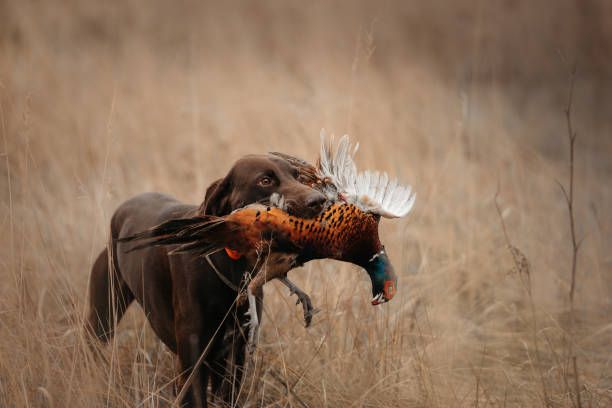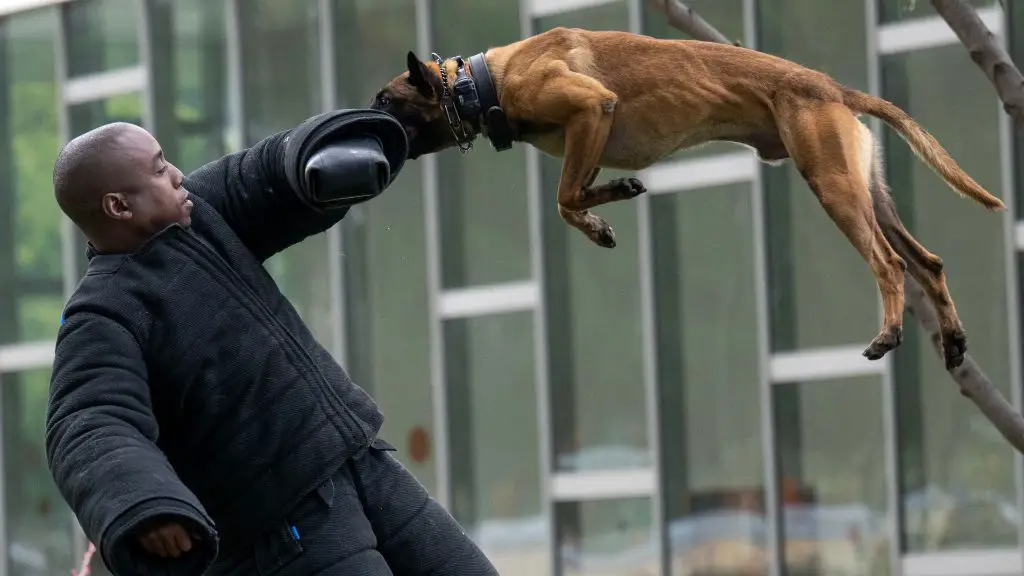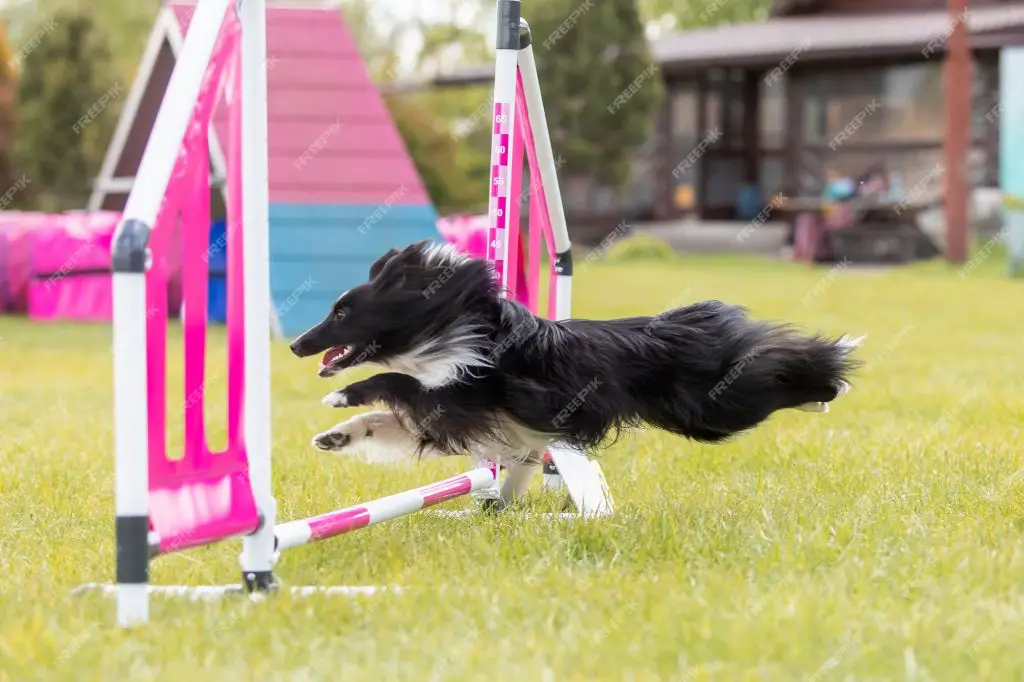Dogs Provide Companionship
One of the most well-known benefits of owning a dog is the companionship they provide. Dogs are affectionate, loyal, and consistent, which helps reduce feelings of isolation and loneliness. Research shows that interacting with pets increases levels of the hormone oxytocin, which boosts mood and relaxation. Dogs provide unconditional love and emotional support to their owners.
Living with a dog can help motivate people to exercise and get outside for walks. Dog owners report lower levels of stress, anxiety and depression compared to non-owners. Dogs encourage play, laughter and fun. The presence of a loving dog can make a house feel like a home.
For people of all ages, especially the elderly, dogs provide much-needed companionship. Their steady presence and companionship can help reduce loneliness and give purpose to their owners’ lives.

Dogs Can Be Trained to Perform Tasks
Dogs have an amazing ability to be trained to perform a variety of useful tasks that assist humans. Some of the most common working roles for dogs include:
Guide and assistance dogs help blind or disabled people. According to https://caplinnews.fiu.edu/americans-disabilities-service-dogs/, there are estimated to be around 500,000 service dogs in the U.S. These specially trained dogs provide crucial support to people with visual impairments or other disabilities, improving independence and quality of life.
Detection dogs are trained to sniff out drugs, bombs, diseases, and more using their powerful sense of smell. They serve on search teams, in airports, and with law enforcement to locate dangerous or illegal items that could harm people.
Search and rescue dogs are skilled at tracking and locating missing people, whether lost hikers, avalanche victims, or disaster survivors. Their tracking abilities combined with search training make them invaluable for finding people in need of help.

Therapy dogs provide comfort and affection to those in hospitals, schools, nursing homes, and other facilities. Interacting with these calm, friendly dogs can improve morale, reduce anxiety, and benefit health.
Dogs Protect Homes and Property
Dogs can help protect homes and property in several ways. First, dogs will often bark to alert owners of any intruders or trespassers on the property. The loud barking can scare away criminals and deter them from attempting to break in. According to experts, “occupancy cues” like barking dogs are major deterrents for burglars trying to target homes (https://www.cnet.com/home/security/can-your-dog-deter-burglars-and-prevent-home-break-ins-heres-what-experts-say/).
In addition to barking, some dogs will confront and intimidate intruders with their presence. Large breed dogs especially can look imposing and make criminals think twice about breaking in. Even small dogs can help deter burglars simply by signaling that someone is home.
Outside of the home, dogs also guard livestock and protect farms from predators. Herding dogs will round up sheep, cattle, and other animals, keeping them safe from theft or animal attacks. Farm dogs live outside and patrol the property, scaring off trespassers in barns, equipment sheds, or any outdoor areas.
Dogs Assist with Hunting

Dogs have been assisting humans with hunting for centuries. Certain breeds have inherent skills and instincts that make them well-suited for hunting different types of game. Hunting dogs can be categorized into several types based on their purpose:
Tracking and Retrieving Dogs – Breeds like Labrador Retrievers and Golden Retrievers excel at tracking and retrieving downed birds and other small game. Their excellent sense of smell allows them to locate and return shot game to the hunter.
Pointing Dogs – Pointers, Setters, and Spaniels are trained to locate game birds and hold or “point” in the direction of the downed bird. This signals the hunter where their prey is located. Examples include German Shorthaired Pointers and English Setters (Source).
Flushing Dogs – Spaniels and other flushing breeds are utilized to sniff out birds and flush them out of hiding and into the open air. The hunter can then easily take a shot at the flushed bird. Some top flushing breeds are English Cocker Spaniels, English Springer Spaniels, and American Water Spaniels.
Scent Hounds – Breeds like Beagles and Basset Hounds use their excellent sense of smell to track larger game like deer, rabbits, foxes, and even bears. They follow the scent trail and chase the prey until the hunter can take a shot.
Hunting dogs allow hunters to more effectively and humanely harvest wild game. They are highly valued partners out in the field.
Dogs Herd and Manage Livestock

Certain dog breeds have a natural instinct to herd and manage livestock like sheep, cattle, and goats. Herding dogs use their intelligence, athleticism, and protective nature to move livestock from one place to another, often over long distances. According to the American Kennel Club, popular herding dog breeds include German Shepherds, Border Collies, Australian Cattle Dogs, and Belgian Malinois.
The main roles herding dogs play with livestock include gathering, driving, and rounding up animals. Their lithe bodies allow them to adeptly maneuver around livestock and nip at their heels to get them moving. Herding dogs are highly trainable and can learn voice commands to direct their herding. Their protective nature helps keep predators like coyotes, wolves, and bears away from livestock. Herding dogs are versatile working dogs that provide immense help to farmers and ranchers.
Dogs Aid Law Enforcement
Police dogs play an important role in aiding law enforcement officers with various tasks. Some of the key ways police dogs assist police include:
Chase Down Suspects – Police dogs can be used to chase, track, and apprehend dangerous suspects or criminals trying to flee a scene. Their speed and sense of smell make them effective at tracking suspects. According to The Marshall Project, police dog bites often occur when a suspect is found hiding or resisting arrest.
Detect Illegal Substances – Police dogs are trained to detect certain scents like drugs or explosives. Their powerful noses allow officers to find illegal substances that may otherwise go undetected. Police dogs are able to smell narcotics, even when hidden very well.
Search for Missing People – When a person goes missing, police dogs can be brought in to track the missing person’s scent. Police dogs have helped locate lost children, elderly with dementia, and other missing persons based on their keen sense of smell and tracking abilities.
Protect Police Officers – Police dogs can help protect officers in dangerous situations like raids or standoffs. The dogs act as backup support and can subdue suspects through biting if needed, reducing risk of harm to police.
Dogs Participate in Dog Sports
Dogs participate in a variety of competitive sports that provide fun activities for both the dogs and their owners. Some of the most popular dog sports include agility, flyball, disc dog, dock diving, and lure coursing. These sports allow dogs to exercise their natural abilities and instincts in a controlled setting.

In dog agility, handlers direct their dogs through an obstacle course with elements like tunnels, jumps, weave poles, and more. It requires training, conditioning, speed, and teamwork. According to the AKC, dog agility has rapidly grown into one of the most popular dog sports with spectators of all ages.[1]
Flyball involves teams of dogs racing over hurdles to trigger a box to release a ball, which they must catch and bring back to their handlers. Flyball allows dogs to run, jump, catch, and retrieve balls in a high energy and competitive relay race.[2]
In disc dog competitions, dogs leap to catch Frisbees their owners throw and perform choreographed freestyle routines with the discs to music. Disc dog allows dogs to showcase their natural catching and leaping abilities.
These sports provide fun events for owners to participate in with their dogs. They also give dogs an outlet to exercise their natural talents like running, jumping, herding, catching, and more in a positive way.
Dogs Are Used in Therapy
Dogs can provide comfort and affection to people in challenging situations such as hospitals, nursing homes, and schools. Animal-assisted therapy utilizes dogs to help people recover from trauma or manage disabilities. Interacting with dogs has been found to reduce anxiety, lower blood pressure, and improve moods (Bert et al., 2016).
Studies show that animal-assisted therapy with dogs can enhance outcomes for patients. For example, research found that introducing therapy dogs into counseling sessions improved engagement and alliance between counselors and clients (Stewart et al., 2016). Another study revealed that children undergoing cancer treatment showed more positive emotions when visited by a therapy dog (Chur-Hansen et al., 2020).

Overall, interacting with friendly dogs as part of therapy provides measurable benefits for both mental and physical health. Their companionship and affection can motivate and support people dealing with difficult circumstances.
Dogs Contribute to the Economy
The pet industry in the United States is worth over $200 billion annually. “2021 Economic Impact of the U.S. Pet Sector” reports that pets were responsible for over $222 billion in total economic output in 2021. This massive industry creates a significant number of jobs for veterinarians, trainers, groomers, walkers, sitters, and more. In addition, dog shows, competitions, and dog parks generate substantial tourism revenue in communities across the country. The companion animal industry clearly has a major positive economic impact.
Dogs Have Working Roles
Dogs have served important working roles alongside humans for thousands of years. According to A History of Working Dogs, dogs were first domesticated over 10,000 years ago and have been selectively bred to perform various jobs that aid human work and life. Today, dogs continue to serve critical functions in many working capacities.
One of the most common working roles for dogs is to guard homes and property as watchdogs. Their protective instincts and loud barking act as a deterrent and alarm system against intruders. Certain breeds like Doberman Pinschers and German Shepherds are particularly well-suited for this role.
In many agricultural societies, dogs work as sheep herding or shepherd dogs. Breeds like Border Collies exhibit the intelligence, athleticism, and herding instinct needed to control and move livestock. Their ability to follow commands and bring sheep together in flocks is an invaluable help to farmers and ranchers.
Dogs also serve as sporting dogs to aid in hunting upland game birds, waterfowl, and large game. Retrievers such as Labradors and Goldens are equipped for marking, flushing, and retrieving downed birds with excellent noses, soft mouths, and obedience. Meanwhile, pointers, setters, and spaniels are prized for their scenting ability and capacity to indicate the location of game.
In all of these working applications and more, dogs demonstrate their usefulness and versatility as helpers, protectors, and companions to humans in work activities. Their loyalty, trainability, and adaptability make them some of humankind’s most valuable animal partners in getting jobs done.